Richard Choularton, Chief - Climate Resiliance for Food Security at UN WFP, talks about using index insurance solutions to manage climate risk issues
General
You are here
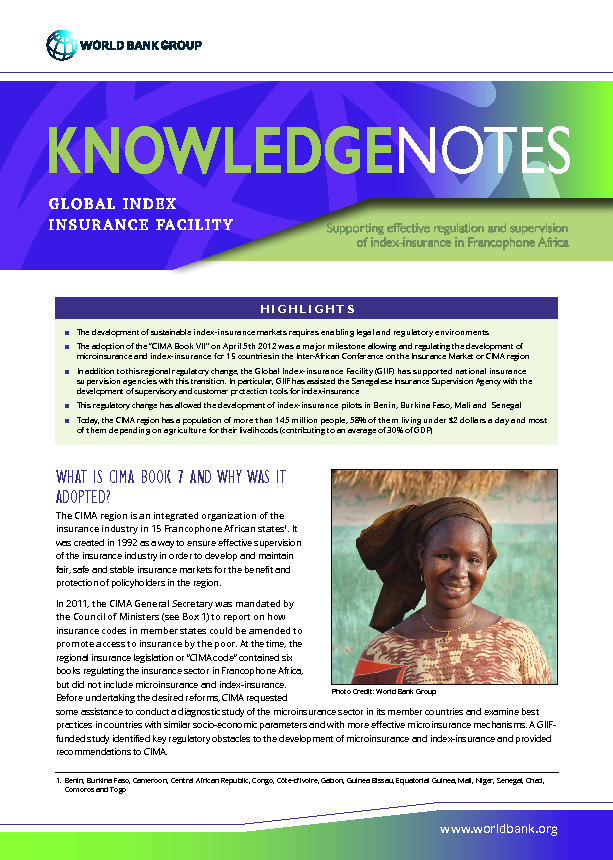
The development of sustainable index-insurance markets requires enabling legal and regulatory environments The adoption of the “CIMA Book VII” on April 5th 2012 was a major milestone allowing and regulating the development ofmicroinsurance and index-insurance for 15 countries in the Inter-African Conference on the Insurance Market or CIMA region In addition to this regional regulatory change, the Global Index-insurance Facility (GIIF) has supported national insurance supervision agencies with this transition. In particular, GIIF has assisted the Senegalese Insurance Supervision Agency with...
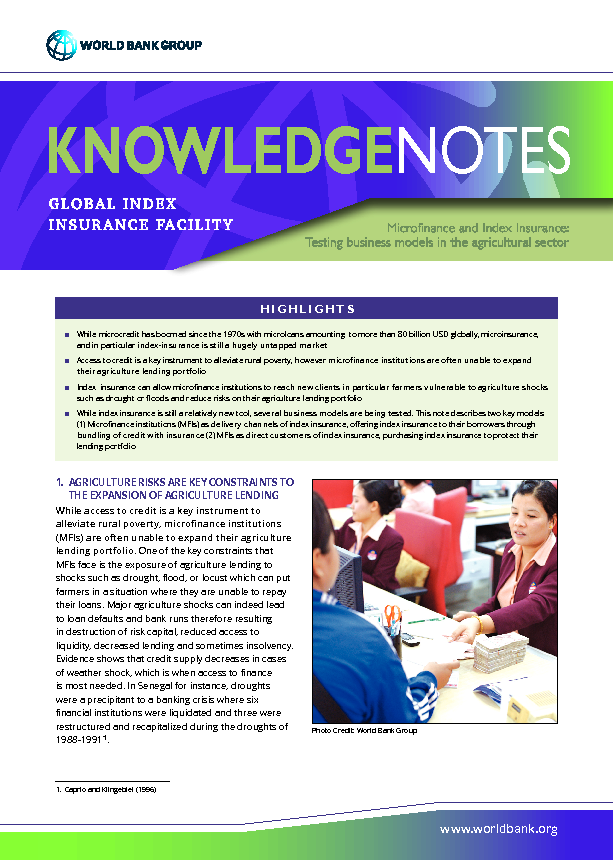
Topics:
While access to credit is a key instrument to alleviate rural poverty, microfinance institutions (MFIs) are often unable to expand their agriculture lending portfolio. One of the key constraints that MFIs face is the exposure of agriculture lending to shocks such as drought, flood, or locust which can put farmers in a situation where they are unable to repay their loans. Major agriculture shocks can indeed lead to loan defaults and bank runs therefore resulting in destruction of risk capital, reduced access to liquidity, decreased lending and sometimes insolvency. Evidence shows that credit...
20
Jan
Year:
2015
The Global Index Insurance Facility (GIIF), part of the World Bank Group’s Finance and Markets Global Practice, will launch indexinsuranceforum.org , an online knowledge platform for index-insurance practitioners globally on January 20, 2015. The official launch event will be held in the ACP Secretariat in Brussels, Belgium and will see GIIF’s key donors, including the European Union and The African, Caribbean and Pacific States (ACP) Group, in attendance. The platform features knowledge products, research and discussions on key issues related to the development of innovative index-insurance...
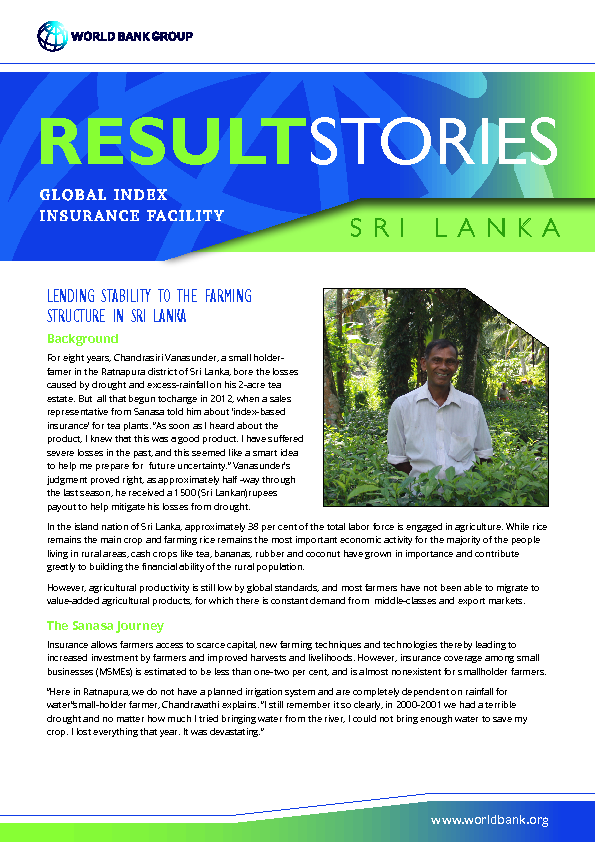
Content owner:
GIIF - World Bank Group
Topics:
For eight years, Chandrasiri Vanasunder, a small holderfamer in the Ratnapura district of Sri Lanka, bore the losses caused by drought and excess-rainfall on his 2-acre tea estate. But all that begun tochange in 2012, when a sales representative from Sanasa told him about ‘index-based insurance’ for tea plants. “As soon as I heard about the product, I knew that this was a good product. I have suffered severe losses in the past, and this seemed like a smart idea to help me prepare for future uncertainty.” Vanasunder’s judgment proved right, as approximately half -way through the last season,...

Sat, 12/27/2014
Country:
Niyitegeka Veneranda, 55 ans, est agricultrice au Rwanda. Elle a sept enfants et cinq petits-enfants. Alors qu’elle possède moins d’un hectare de terrain avec son mari, elle a réussi a construire une petite maison, à nourrir sa famille et à envoyer se trois plus jeunes enfants à l’école. Grâce à une assurance agricole, elle a obtenu un prêt d’une banque locale qui lui a permis d’accroître sa production de riz, et elle prévoit de demander un autre prêt l’année prochaine pour étendre encore sa surface cultivable.

Sat, 12/27/2014
Country:
Fifty-five year old Niyitegeka Veneranda lives in rural Rwanda. She and her husband are parents to seven children and grandparents to five. They farm less than a hectare of their own land, yet she has been able to build a small house, feed her family, and send her last three children to school. She expanded her rice production recently with a loan from a local bank made possible through agricultural insurance, and plans to expand her acreage with another loan next year.
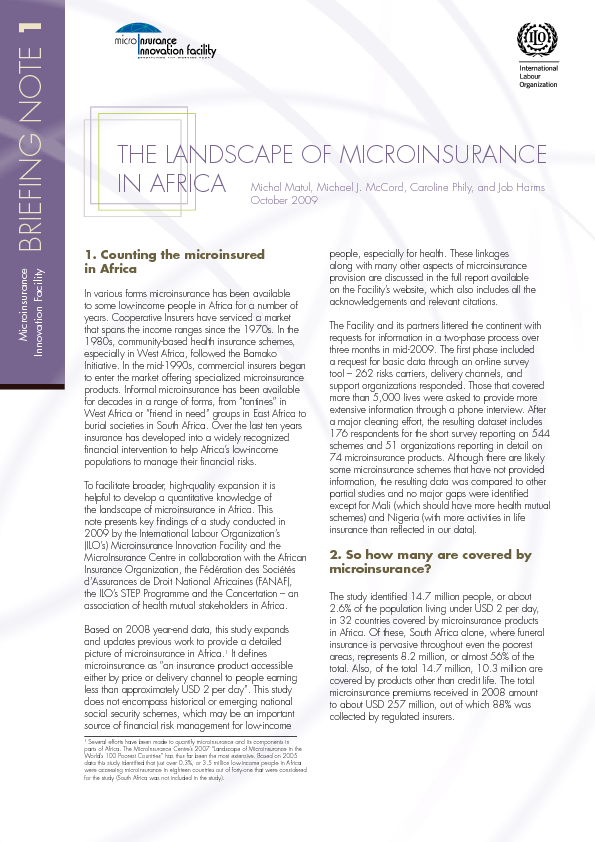
Content owner:
Topics:
Full Publication In various forms microinsurance has been available to some low-income people in Africa for a number of years. Cooperative Insurers have serviced a market that spans the income ranges since the 1970s. In the 1980s, community-based health insurance schemes, especially in West Africa, followed the Bamako Initiative. In the mid-1990s, commercial insurers began to enter the market offering specialized microinsurance products. Informal microinsurance has been available for decades in a range of forms, from “tontines” in West Africa or “friend in need” groups in East Africa to...
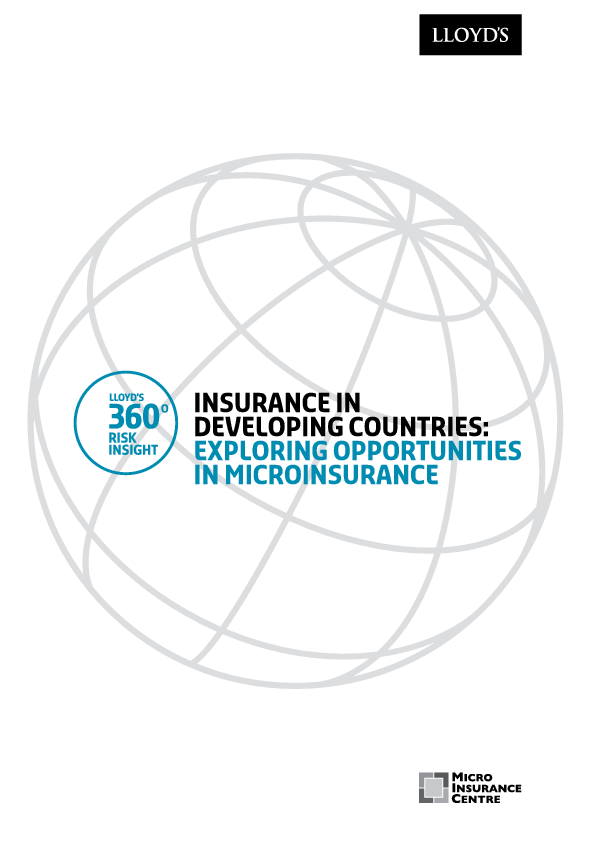
Full Publication Microinsurance is a unique topic for a Lloyd’s 360 Risk Insight report. Usually, we advise businesses on managing emerging risks but this report focuses more on opportunity than emerging risk. Produced by Lloyd’s and the MicroInsurance Centre, this report sets out the understanding, mechanisms and partnerships needed to deliver insurance to three billion low income individuals across the globe, and how this will bring benefits to both the developing world and the insurance industry. Microinsurance is not charity, it is business, but it will require insurers to change their...
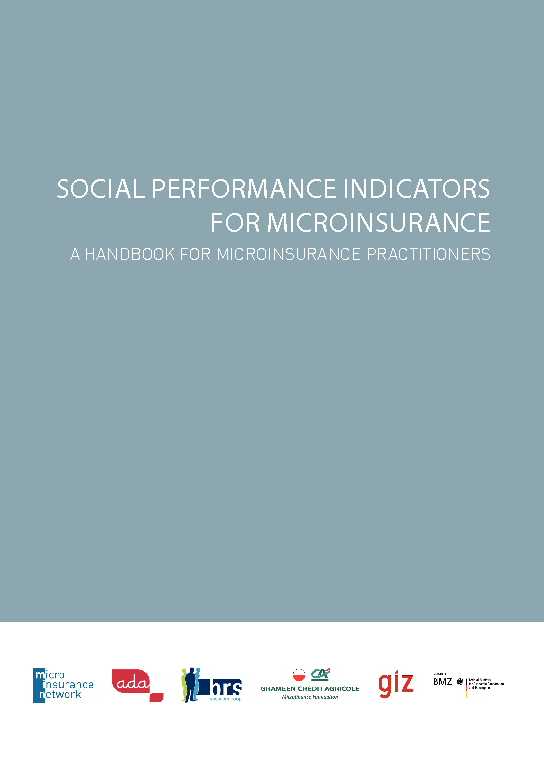
Content owner:
Topics:
Microinsurance pioneers and practitioners frequently underline their social focus but are often unable to support these intentions with figures and adapted reports. The social performance indicators presented in this handbook allow practitioners to go beyond good intentions by monitoring and documenting their social performance and improving their operations accordingly. This handbook describes a framework, which includes a set of principles, guidelines and key performance indicators, that is designed to support microinsurance practitioners to monitor, improve and champion social performance...
